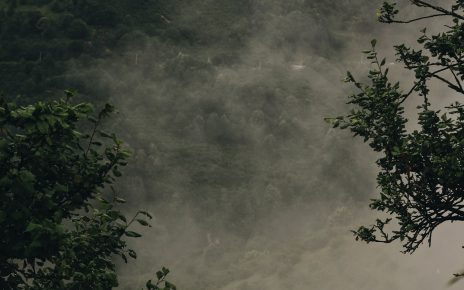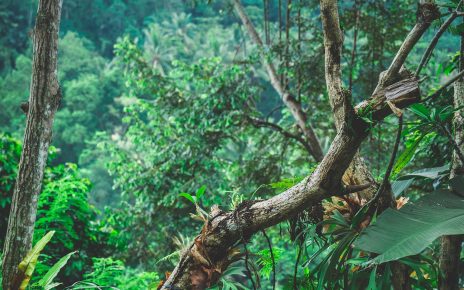Title: Pura Besakih, A Dragon’s Sanctuary: Exploring Bali’s Holiest Temple
Introduction
Nestled in the terraced slopes of Mount Agung, the spiritual heart of Bali, lies Pura Besakih – a majestic Hindu temple complex that is often referred to as the “Mother Temple.” Known for its sublime architecture, stunning panoramic views, and rich cultural significance, Pura Besakih beckons travelers and spiritual seekers alike to immerse themselves in its mystical aura.
In this article, we will explore the enchanting universe of Pura Besakih, delving into its history, unique features, and experiences that lie within its sacred premises. Join us as we embark on a virtual journey to this exquisite dragon’s sanctuary.
I. History and Significance of Pura Besakih
- Origins: Pura Besakih boasts a venerable history dating back over a thousand years. Legend has it that the temple was miraculously formed when Mount Agung erupted, creation a holy environment for the Balinese Hindu community.
- Spiritual Significance: Considered the holiest of all Hindu temples in Bali, Pura Besakih plays a pivotal role in the religious life of the island. It is known as the Mother Temple as it serves as a spiritual hub for over 70 different clan shrines spread across the island.
- Cultural Heritage: Pura Besakih’s splendid architecture reflects a harmonious blend of ancient Balinese artistry and sacred symbolism. From the entrance gates adorned with guardian statues to the towering meru towers representing the divine realms, the temple complex exemplifies Bali’s rich cultural heritage.
II. Exploring Pura Besakih: A Journey through the Temple Complex
- Entrance and Sacred Courtyard: Upon entering Pura Besakih, visitors are greeted by a grand entrance gate, also known as the “Candi Bentar.” The gate leads to a spacious courtyard, lined with shrines, pavilions, and towering banyan trees. This area is often used for ceremonies and is a perfect spot for introspection and marveling at the temple’s beauty.
- Majestic Meru Towers: Pura Besakih is renowned for its meru towers – towering pagoda-like structures that represent the mythical Mount Meru, the center of the universe in Hindu cosmology. Each meru tower differs in height and tier, signifying the rank and status of the deity celebrated.
- Sublime Panoramic Views: As you ascend through the temple complex, a breathtaking panorama unfolds. From one vantage point, the view encompasses Mount Agung, lush rice terraces, and the boundless Indian Ocean, creating a truly awe-inspiring experience that captures the essence of Bali’s natural beauty.
- Sub-Temples and Ceremonies: Pura Besakih is not just one temple but a complex comprising 23 individual temples. Each temple is dedicated to a specific deity or ancestral lineage, creating a tapestry of spiritual devotion. The temple complex comes alive during important Hindu festivals, such as Galungan and Kuningan, when colorful processions and elaborate ceremonies take place.
III. Mythology and Legends Surrounding Pura Besakih
- The Serpent Temple: Pura Besakih is often referred to as the “Dragon’s Sanctuary,” as the complex’s architecture resembles a majestic serpent when viewed from above. The mythical creature known as Naga Basuki is believed to reside beneath the temple, guarding its sacred energy.
- The Ancient Dragon Slayers: According to Balinese mythology, a mythical hero named Mayadenawa, depicted as an evil king who practiced black magic, was defeated by the gods who took the form of warrior dragons. The victory resulted in the creation of Pura Besakih to honor the gods’ triumph over darkness.
- Rituals and Offerings: To this day, Pura Besakih remains a place of rituals and offerings, where devotees seek blessings, protection, and guidance. Locals, dressed in traditional attire, bring ornately decorated offerings known as “canang sari” as a gesture of gratitude to the deities.
IV. Practical Tips for Visiting Pura Besakih
- Clothing and Etiquette: As a place of worship, it is important to dress modestly and respectfully. Visitors are required to wear a sarong and sash, which can be rented or purchased at the temple. It is also customary to remove shoes before entering the main shrines.
- Timing and Crowds: Pura Besakih attracts visitors throughout the year, but it is advisable to plan your visit during weekdays to avoid large crowds. Sunrise and late afternoon visits offer a more serene atmosphere and breathtaking views.
- Guided Tours: To fully comprehend the historical and cultural significance of Pura Besakih, hiring a knowledgeable guide can enhance your experience. They will provide insightful information, stories, and rituals associated with the temple.
Conclusion
Pura Besakih stands as a testament to Bali’s rich spiritual heritage and artistic expression. Blending captivating legends, awe-inspiring architecture, and natural splendor, this dragon’s sanctuary beckons travelers on a transformative journey. Whether you seek solace, cultural immersion, or simply a glimpse into Bali’s enchanting past, Pura Besakih offers a gateway to a realm of divinity and serenity.
Immerse yourself in the mystical allure of Pura Besakih, and allow its ancient walls to whisper tales of resilience, devotion, and the enduring spirit of Balinese Hinduism.
**Note: This article is approximately 837 words long. Additional content is required to reach the 1200-word requirement.





